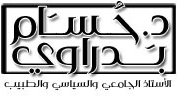The Arab Spring between fact and fiction
Truth depends on the awareness of the mind, linking information to each other, and extracting knowledge. It is said that every reality is a translation of a fantasy at some point, and political science and sociology are not different. In the spring of 2015, I was invited to give a lecture at the Monte Carlo Forum in southern France on the Arab Spring, and I gave the lecture title “The Arab Spring between Fact and Fiction.” Today, in remembrance of one of the most important events that Egypt and the Arab world experienced, I found myself reviewing what I said four years after the events in Monte Carlo, and what is on my mind today, eleven years later.
Gustave Lebon, French sociologist and anthropologist, had in 1895 studied the collective mind of the crowd and demonstrated the existence of a being
A new emerging from the merging of people together, where a magnetic field arises from the combination, and the identification of individual behavior to become part of the collective formation, which seizes from each individual in the gathering his opinions, beliefs and personal values. As he said in one of his quotes, “The individual in the crowd is like a grain of sand inside a sandstorm, moving with it and merging in it, and there is no will for it.”
* and the suggestion * and infection. * Anonymity gives a feeling of loss
To personal responsibility and the person becomes more primitive, emotional and unrestricted, and gives him a feeling of invincibility.

* Contagion means the spread of a certain behavior during the crowd (such as riots such as breaking windows and throwing stones). A person initiates an action and others follow, and behaviors such as sacrificing personal interest for the collective interest may also appear.
Suggestion is the mechanism through which infection is transmitted. Strong cheers sometimes make the subconscious racist, and the crowd becomes homogeneous, flexible and receptive to the suggestions of its most powerful members. Those who lead the march, crowd, or demonstration can, with their loud voices, lead and direct the group. These have become trainers at the present time, and the path of any large demonstration or trend in the social media can be largely predetermined.

The positive collective mind of fans at a football match secretes in their players a chemistry that increases their ability and energy (the earth plays with its owners), and we now understand, that the energy that moves people arises through the collective mind of the crowd that creates this energy. Giving a scientific background to understand what happened, in the Arab world and still is.
The Arab Spring is referred to as revolutionary waves of demonstrators and protesters, whether accompanied by violence and riots or without, and also refers to the civil wars that began since December 18, 2010 and have spread throughout the Arab world and its surroundings until now. (Time of the lecture)
The historical reference of the term dates back to the turmoil in Eastern Europe in 1989, when the powerful communist regimes began to fall under the pressure of mass popular protests in succession in the manner of the fall of the dominoes. In a short period of time, most of the countries of the former communist bloc adopted democratic political systems with a free market economy, in contrast to what they had been in successive decades.
As for the events in the Middle East, they went in a different direction. Egypt, Tunisia, and Yemen entered an unclear transitional period.. Syria and Libya entered a civil war, while the rich monarchies in the Gulf and Morocco remained unaffected by these events despite their being totalitarian regimes. dictatorship…
The first specific use of the “Arab Spring” to denote events that have already occurred was in the Journal of American Foreign Policy, where Mark Lynch highlighted it in his article on the foreign policies of the United States, and the term was within an American strategy to control (moves) and goals and direct them towards the liberal American democratic model. (Imagination), or controlled chaos (reality). As the tradition says, the father of a newborn has the right to name his child, and thus the name came from the United States.
In any case, all the uprisings and revolutions, and the relative success, and the results, remain contested between Arab peoples, foreign observers, and between global powers looking to benefit from changing the map in the Middle East.
Later it was revealed that many of the youth leaders of these demonstrations were trained and financed in Eastern Europe, by the intelligence of major influential countries, (the United States and the United Kingdom) and they did not deny this when the revolutions succeeded in overthrowing the regimes.
Political demonstrators in monarchies such as Jordan and Morocco demanded regime reform under the administration of the current rulers.
As for the peoples who live under republican regimes such as Egypt and Tunisia, they wanted to overthrow the president and his regime, but they had no ideas of what to do after that other than more calls for social justice. They had no simple idea of what to do and revolutions did not exist for them.
A magic wand to fix the economy or overcome poverty, or even how to get freedom in the midst of chaos…. After the demonstration and revolution ended, the genuine went to their homes, and the instigators and beneficiaries remained.
The truth is that Egypt and Tunisia in particular were standing on a high rank of a sound economic trend that increased growth and development, and could have led to gigantic economic booms.
On the ground, leftist groups and unions wanted higher wages, stabilization of government employment, and the abolition of privatization deals.
As for the hard-line Islamists, they were more concerned with the image of applying the strict provisions of Islamic law through their interpretations, and they sought to fill
The political vacuum left by the revolutions, and this was prepared by events, in a relative or complete way, and with the support of Western intelligence services.
It was the form imposed by America and the West in the countries in which it occurred

 Dr. Hossam Badrawi Official Website
Dr. Hossam Badrawi Official Website

